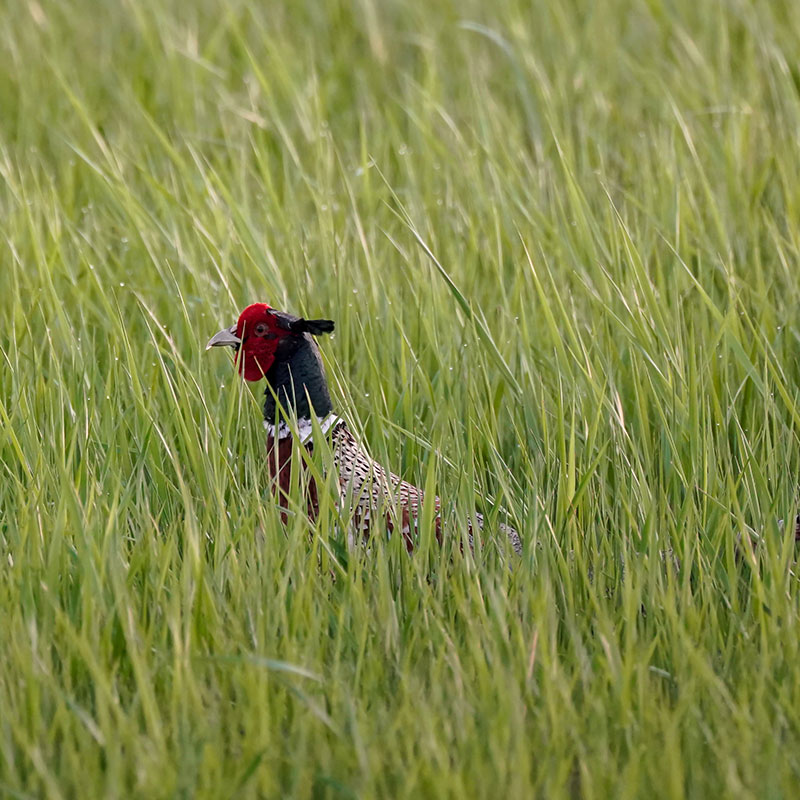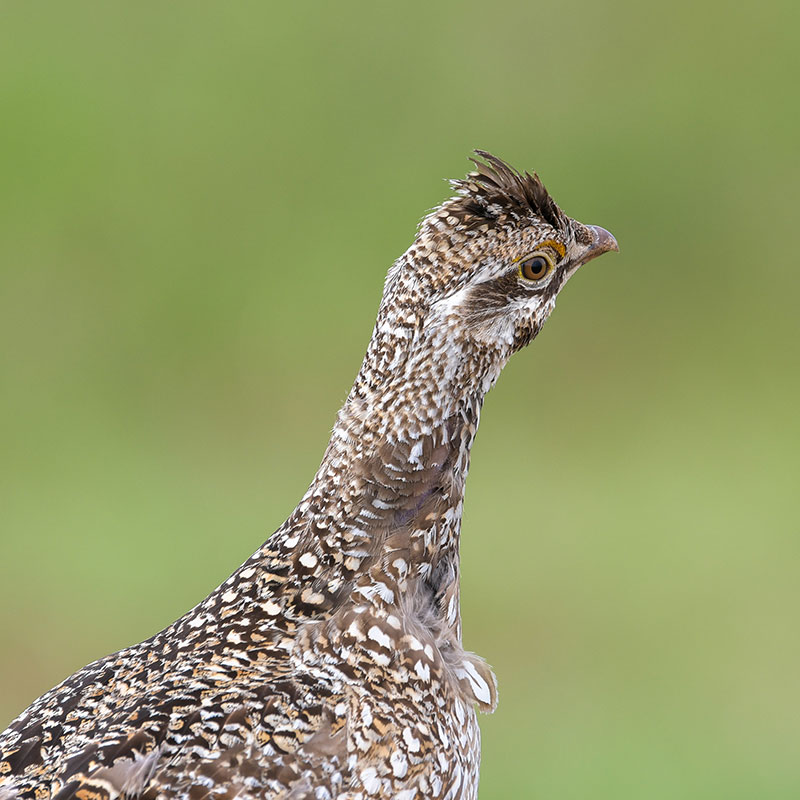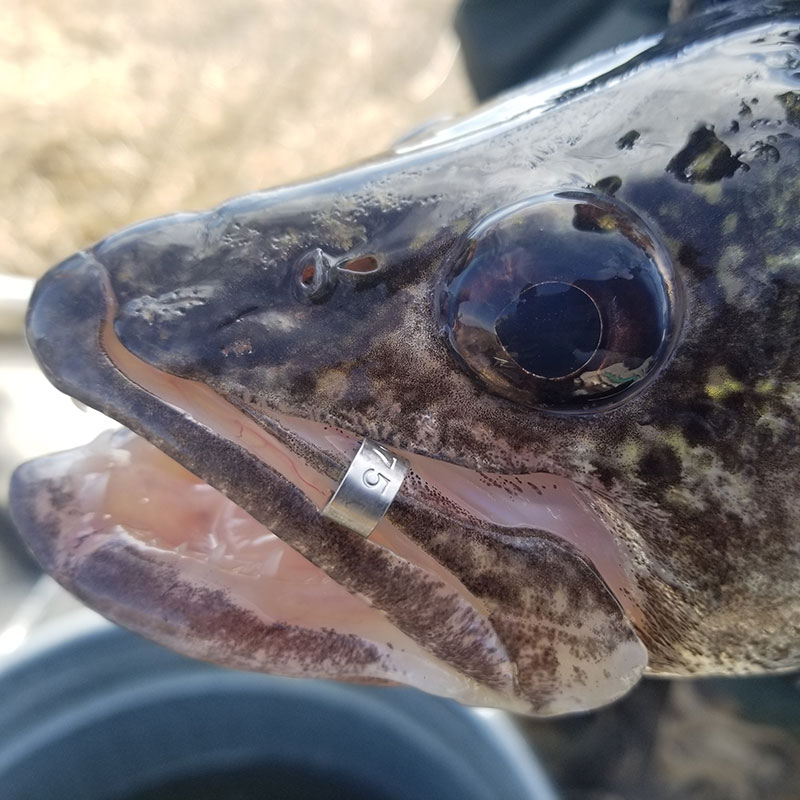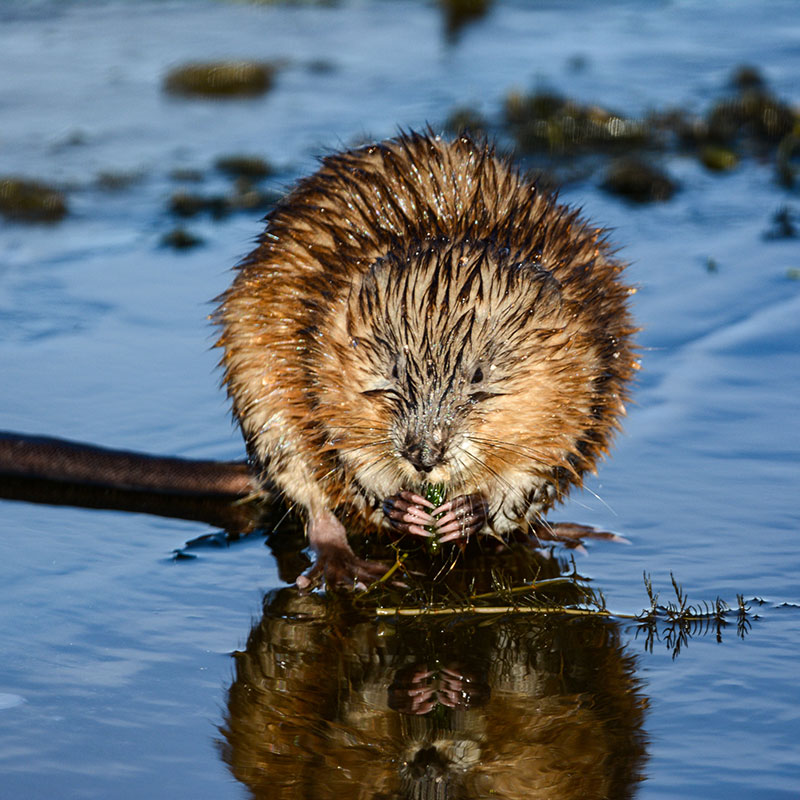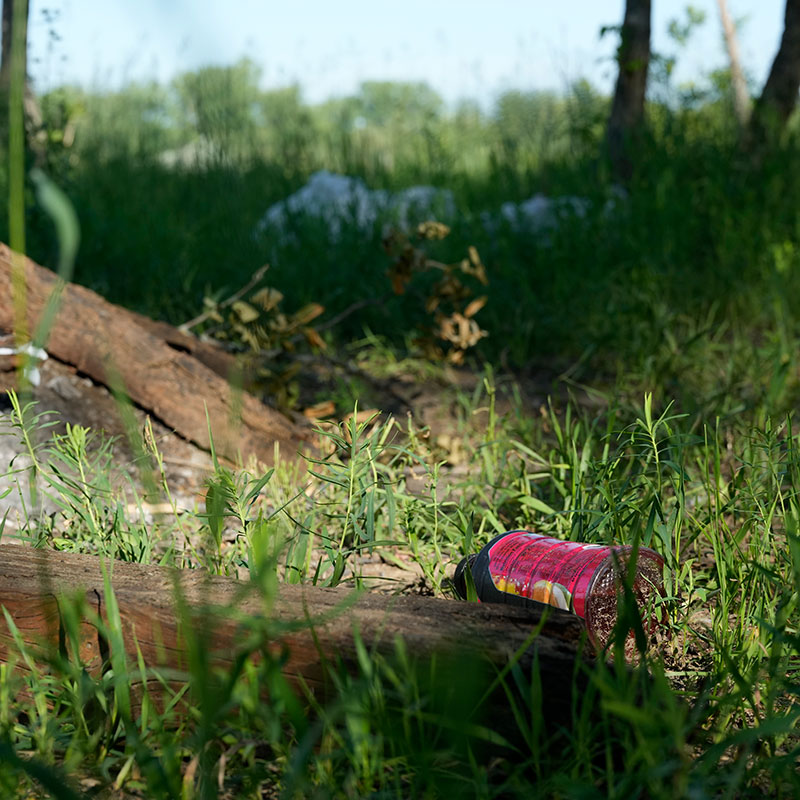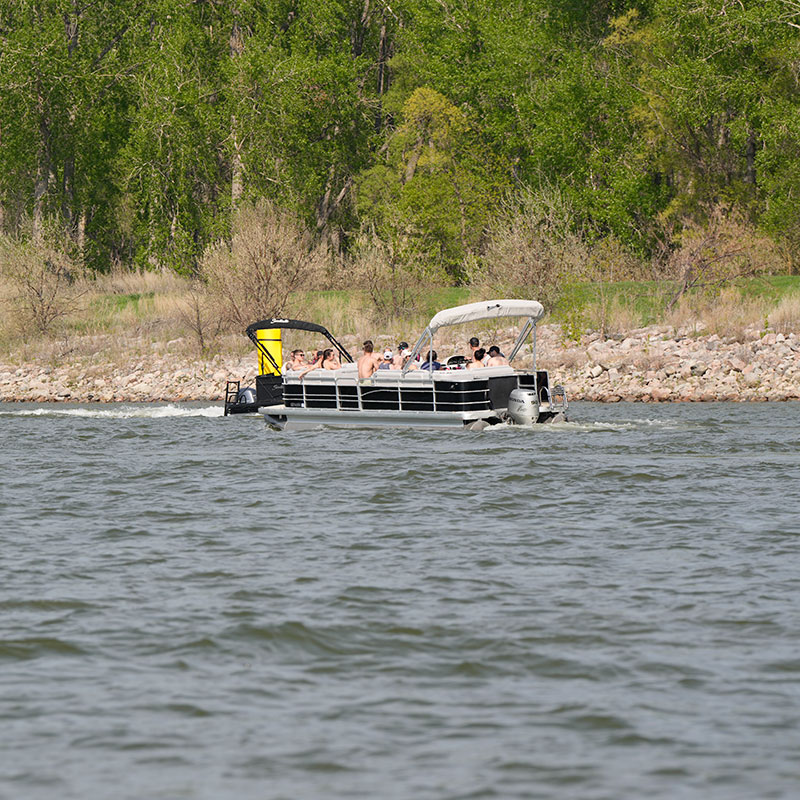The number of roosters heard crowing during the North Dakota Game and Fish Department’s 2023 spring pheasant crowing count survey was up 30% statewide from last year.
“We documented increased production for most of the state during 2022 brood routes compared to the last couple years, and we also confirmed high reproduction rates while aging hunter-submitted pheasant wings,” said R.J. Gross, Department upland game management biologist. “So, the increase in pheasant density comes as no surprise despite the high snowfall this past winter.”
The primary regions holding pheasants showed 19.5 crows per stop in the southwest, up from 14.1 in 2022; 16.6 crows per stop in the northwest, up from 13.7; and 12.8 crows per stop in the southeast, up from 9.7. The count in the northeast, which is not a primary region for pheasants, was 3.3 crows per stop, up from 3.0 last year.
“Current conditions are excellent across the state with adequate moisture this spring and early summer. These conditions should foster insect hatches, which would provide forage to chicks for brood rearing,” Gross said. “Pheasant chicks hatch from early June through late July. Much of nesting success will depend on the weather, and we will more accurately assess pheasant production during our late summer roadside counts, which begin at the end of July.”
Pheasant crowing counts are conducted each spring throughout North Dakota. Observers drive specified 20-mile routes, stopping at predetermined intervals, and counting the number of pheasant roosters heard crowing over a 2-minute period.
The number of pheasant crows heard are compared to previous years’ data, providing a trend summary.
The North Dakota Game and Fish Department’s 76th annual spring breeding duck survey conducted in May showed an index of more than 3.4 million birds, up just 1.5% from last year.
And like last year, the breeding duck index for 2023 was the 23rd highest on record and stands at 39% above the long-term (1948-2022) average, according to Mike Szymanski, migratory game bird supervisor.
“As with all May waterfowl surveys, we are counting what remains of last year’s fall flight. After a modest production year last year, duck numbers were flat relative to responses that are more typical with abundant water on the landscape,” Szymanski said. “Moreover, a large decrease in the number of ducks observed in areas with good wetland conditions (i.e., the Drift Prairie) is emblematic of a broader population that has declined overall. Such observations may be more typical as prospects for large fall flights decline from those of the 1994 to 2016 time period.”
The number of total wetlands was down 26% from last year and 76% above the 1948-2022 average. The water index is based on basins with water and does not necessarily represent the amount of water contained in wetlands or the type of wetlands represented.
“This is the seventh wettest spring in terms of wet basins on record, following our second wettest survey last year,” Szymanski said. “The prairie wetland ecosystem is highly dynamic, which is evidenced by the last few years bouncing between wet and dry conditions. Whether wet or not, waterfowl resources continue to decline in the state due to diminished reproductive potential, limited by secure nesting cover.”
Indices for most individual species, except for blue-winged teal, mallards and scaup increased from 2022. Mallards were down 9.8% from 2022 and represented the 27th highest count on record. The green-winged teal index increased 71%, wigeon and pintails increased 58% and 47%, respectively, and other increases ranged from 12% for shovelers to 19% for canvasbacks. Decreases from the 2022 index were observed for scaup (-23%), mallards (-9.8%) and blue-winged teal (-4.4%).
Pintails, a species of management concern, appeared to be responding to excellent nesting conditions where available, Szymanski said. These birds have struggled continentally and it’s good to see them respond to good habitat conditions in the state, he added.
“Breeding duck numbers in North Dakota generally trend with wetland conditions. After a nominal increase, the overall number of ducks is still above the 75-year average, but 15% below the 1994-2016 average,” Szymanski said. “Breeding duck indices above 4 million in the state will be unlikely, even during the wettest years, unless our upland nesting habitats improve. The Dakotas will no longer be able to consistently buoy midcontinent duck populations without large numbers of acres of secure nesting cover on the landscape in the form of perennial grasses provided by programs like CRP.”
Szymanski added that the estimated number of Canada geese (297,914) in North Dakota during the May 2023 survey was down 23% from the 2022 estimate, which was a record.
“Canada goose nesting efforts appeared to be reduced and delayed as few Canada goose broods and lower than normal numbers of nests were observed on the survey,” he added. “There were many pairs and small groups of Canada geese observed during the survey on territories. Pairs may have simply been delayed, but some flooding of nests occurred during early May in areas with 4 to 8 inches of rainfall during active nesting.”
North Dakota’s 2022 pheasant, sharp-tailed grouse and Hungarian partridge harvests were up from 2021.
R.J. Gross, Game and Fish Department upland game biologist, said the overall harvest was likely a result of more hunters and good production.
“We were somewhat surprised that harvest was up despite slight declines during our spring 2022 surveys and the early end to most upland seasons when winter showed up in November,” Gross said. “The increase in harvest indicates good reproduction, perhaps even better than what we saw during our brood routes. The statewide blizzards that occurred in spring of 2021, combined with spring showers, were followed by a rapid vegetation response, so late-season nesting cover was exceptional. In addition, brood survival benefited from a warm and dry late summer with abundant insects.”
Last year, 51,270 pheasant hunters (up 9%) harvested 286,970 roosters (up 10%), compared to 47,020 hunters and 259,997 roosters in 2021. Counties with the highest percentage of pheasants taken were Hettinger, Divide, Bowman, Williams and Stark.
A total of 20,461 grouse hunters (up 29%) harvested 62,640 sharp-tailed grouse (up 37%), compared to 15,762 hunters and 45,732 sharptails in 2021. Counties with the highest percentage of sharptails taken were Mountrail, Burke, Bowman, Divide and McKenzie.
Last year, 19,125 hunters (up 36%) harvested 54,553 Hungarian partridge (up 22%). In 2021, 14,013 hunters harvested 44,822 Huns. Counties with the highest percentage of Hungarian partridge taken were Mountrail, Ward, Bottineau, Williams and Divide.
Anglers should note that live white suckers are not legal baitfish in North Dakota, except in the Bois de Sioux and Red rivers.
Anglers can use live white suckers on the Bois de Sioux and Red rivers, and tributaries up to the first vehicular bridge; however, they are illegal elsewhere. Fathead minnows, sticklebacks and creek chubs are the only legal live baitfish outside of the Bois de Sioux and Red rivers.
The transportation of live white suckers, other than in Richland, Cass, Traill, Grand Forks, Walsh and Pembina counties, is illegal. In addition, it is illegal for anglers to import minnows and other forms of live aquatic bait, such as leeches and frogs, into North Dakota.
When purchasing live aquatic bait, anglers must buy from a licensed North Dakota retail bait vendor. Bait vendors can properly identify species and ensure all bait is clean of any aquatic nuisance species.
For more information, refer to the 2022-24 North Dakota Fishing Guide, available at license vendors or online.
The North Dakota Game and Fish Department encourages boaters to plan accordingly when launching and loading a boat. Here are a few simple reminders to ensure a fluent transition at the ramp.
LAUNCHING
- Don’t pull onto the ramp until your boat is ready to launch.
- Prepare for launching in the parking area. Remove covers, load equipment, remove tie downs, attach lines and put in drain plug before backing onto the ramp.
- When ready, pull in line to launch. Wait your turn. Be courteous.
LOADING
- Don’t block the loading area with your boat until your tow vehicle is ready to load. Wait until you are clear of the launch area to unload gear.
- As soon as your trailer is in the water, load and secure your boat to the trailer.
- Remove boat and trailer from the water as quickly as possible.
- Get clear of the ramp. Pull into the parking area to finish securing your boat, unload gear, drain all water and inspect for and removing any vegetation. Remember to leave plugs out when transporting your boat.
Anglers can help fisheries managers by reporting information on tagged fish.
Most tagged fish in North Dakota, except salmon, will have either a metal tag on the jawbone or a small tag attached near the dorsal fin. Tagged salmon have their adipose fin removed and also have a microscopic, coded wire tag embedded in their head. Anglers are asked to drop their tagged salmon heads off at Game and Fish offices in Riverdale or Bismarck so that biologists can remove the tag and read it.
North Dakota Game and Fish Department fisheries biologists say it’s imperative anglers report tagged fish from whatever waters they are fishing in, no matter if they end up in livewells or back in the lake. Anglers are also encouraged to treat tagged fish just like they would treat any other fish they might have caught. Anglers practicing catch-and-release should record the tag number before releasing the fish.
Anglers are asked to record the tag number and report that along with the date and location the fish was caught, approximate size and whether the fish was harvested or released. Tagged fish can be reported on the Game and Fish Department’s website, or call the Department’s main office in Bismarck at 701-328-6300.
The North Dakota Cooperative Fur Harvester Education Program is hosting fur harvester education classes on Aug. 1, 3 and 5 at the North Dakota Game and Fish Department in Bismarck and Oct. 5, 6 and 7 at the Velva Wildlife Club in Velva.
Fur harvester education classes are 16 hours, free, voluntary and cover topics associated with trapping and fur hunting. Much of the instruction includes hands-on experience with traps and equipment commonly used for harvesting furbearers and properly caring for the pelts.
Successful completion of this training provides certification, which is recognized by other states where mandatory trapper education training is required. Participants can enroll for either of these classes on the Game and Fish Department website.
The North Dakota Cooperative Fur Harvester Education Program is also hosting a Using Cable Devices in North Dakota training seminar on Oct. 14 from 9 a.m. to 4 p.m. at the Velva Wildlife Club.
The seminar is free and available to anyone who would like information and experience using cable devices. All aspects of cable device construction, care, use, ethics, responsibility, and legal requirements are covered. Much of the instruction includes hands-on field application and set construction. Preregistration is required by contacting Rick Tischaefer at 701-460-1055.
The North Dakota Game and Fish Department reminds archery hunters to plan accordingly and allow for time to receive their bow tag in the mail as hunters will not receive their tag immediately after purchase.
Bow licenses can still be purchased at license vendors, but the tag will arrive by postal mail, not over the counter while the customer waits. This applies while purchasing a bow license at a license vendor, or at the Game and Fish Department’s main office in Bismarck.
The bow tag will be mailed the next business day after the bow license is purchased. All archery hunters must have the bow tag in their possession before hunting.
Bow licenses can also be purchased online by visiting My Account.
North Dakota boaters traveling to or through other states or Canadian provinces, are reminded to check the aquatic nuisance species regulations of their destination.
Mandatory boat inspections may be required along highways or at lakes based on destination or route taken. In general, to ensure compliance, boaters are strongly encouraged to clean, drain and dry equipment.
- Clean — remove plants, animals and excessive mud from trailers, hulls, motors and other equipment such as fishing rods.
- Drain — drain all water, including bilges, livewells and bait buckets.
- Dry — allow all equipment to dry completely, as an inspection might fail in a neighboring state if any standing water is present. If necessary, use sponges or towels to remove excess water and leave compartments open to dry.
Outdoor recreationists are encouraged to keep it clean this summer by packing out all trash.
All garbage, including used fireworks, should be placed in a proper trash receptacle. If trash cans aren’t available, or full, dispose of trash at home.
It is not uncommon to see garbage piling up around full trash containers. Styrofoam containers are not biodegradable, but are often found wedged in cattails, drifting or washed up on shore.
Tires, mattresses and kitchen appliances have found their way to public use areas. This illegal dumping is costly to clean up and takes a significant toll on the environment. Not only does it spoil the beauty of the land, it destroys habitat, has the potential to pollute North Dakota waters and can injure wildlife.
Regardless of how safe and cautious boaters are on the water, accidents happen. If a boating accident involves injury, death or disappearance of a person, an accident report must be completed and sent to the North Dakota Game and Fish Department within 48 hours of the occurrence.
If property damage exceeds $2,000, but no deaths or injuries occur, a boat operator has five days to file a report.
These reporting requirements are mandatory whether there is one or more boats involved.
A boat accident form is available on the Game and Fish Department website, at any Game and Fish office or by contacting a local game warden.
Photographers interested in sending photos for the North Dakota Game and Fish Department’s Watchable Wildlife Photo Contest are asked to follow the guidelines for submitting their work.
Photographers should go to the Game and Fish Department’s website. Then it is a matter of providing some pertinent information about the photo and uploading it. Doing so helps both with ease of submitting photos for the photographer and managing those images for Department staff.
The contest is now open and the deadline for submitting photos is Oct. 2. For more information or questions, contact Patrick Isakson, Department conservation biologist, at pisakson@nd.gov.
The contest has categories for nongame and game species, as well as plants/insects. An overall winning photograph will be chosen, with the number of place winners in each category determined by the number of qualified entries.
Contestants are limited to no more than five entries. Photos must have been taken in North Dakota.
By submitting an entry, photographers grant permission to Game and Fish to publish winning photographs in North Dakota OUTDOORS, and on the Department’s website.
North Dakota state law requires youth ages 12-15 who want to operate a boat or personal watercraft by themselves with at least a 10-horsepower motor must pass the state’s boating basics course.
The course is available for home-study by contacting the North Dakota Game and Fish Department at 701-328-6300. Two commercial providers also offer the course online, and links to those sites are found on the boat and water safety education page on the Game and Fish website.
While the home-study course is free, students are charged a fee to take it online. The online provider charges for the course, not the Game and Fish Department. The fee remains with the online provider. The course covers legal requirements, navigation rules, getting underway, accidents and special topics such as weather, rules of the road, laws, lifesaving and first aid.

Steve Dyke
Dyke Retires, Kreft Fills Supervisor Role
Steve Dyke retired after 35 years with the North Dakota Game and Fish Department. Dyke joined the Department in 1988 as a fisheries biologist. At the time of his retirement, he was the Department’s conservation supervisor, a position he held since 2001.

Bruce Kreft
Bruce Kreft, who joined the agency’s fisheries division in 1989, and has been a conservation biologist since 2000, filled the position vacated by Dyke.

Nate Harling
PLI Habitat Manager Named
Nate Harling, Department private land field operation supervisor since 2015, was named habitat manager for the Game and Fish Department’s private land initiative in June. Harling will focus heavily on managing various partnerships and projects to put more habitat on the landscape.
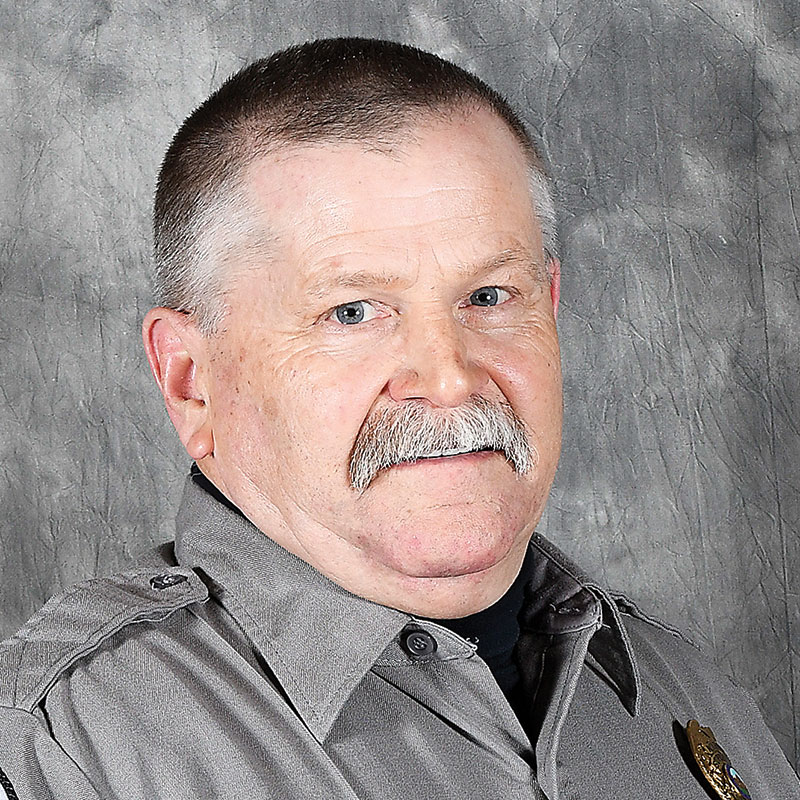
Doug Olson
Olson Retires, Lucas Promoted to Supervisor
North Dakota Game and Fish Department game warden, Doug Olson, retired after 42 years with the Department. Olson was a regional supervisor for the enforcement division for the last 19 years in both Dickinson and Riverdale.
“Doug was a valuable member of the Department and specifically the enforcement division,” said Scott Winkelman, enforcement division chief. “He was an excellent training officer and was dedicated to protecting our wildlife and those who enjoy it. His knowledge and experience is invaluable to the agency and will be difficult to replace.”

Joe Lucas
Joe Lucas, Department game warden in Turtle Lake, filled the Region 3 supervisor position in northwestern North Dakota vacated by Olson.







